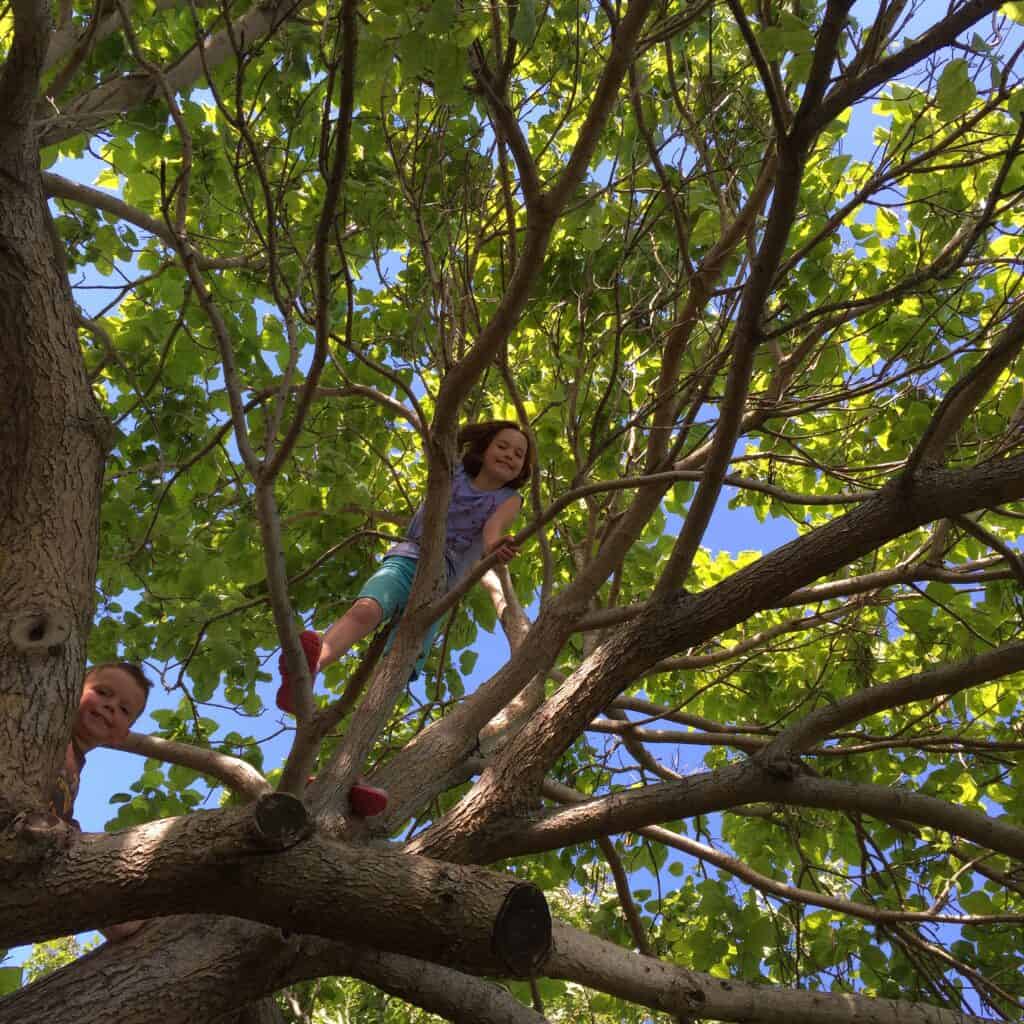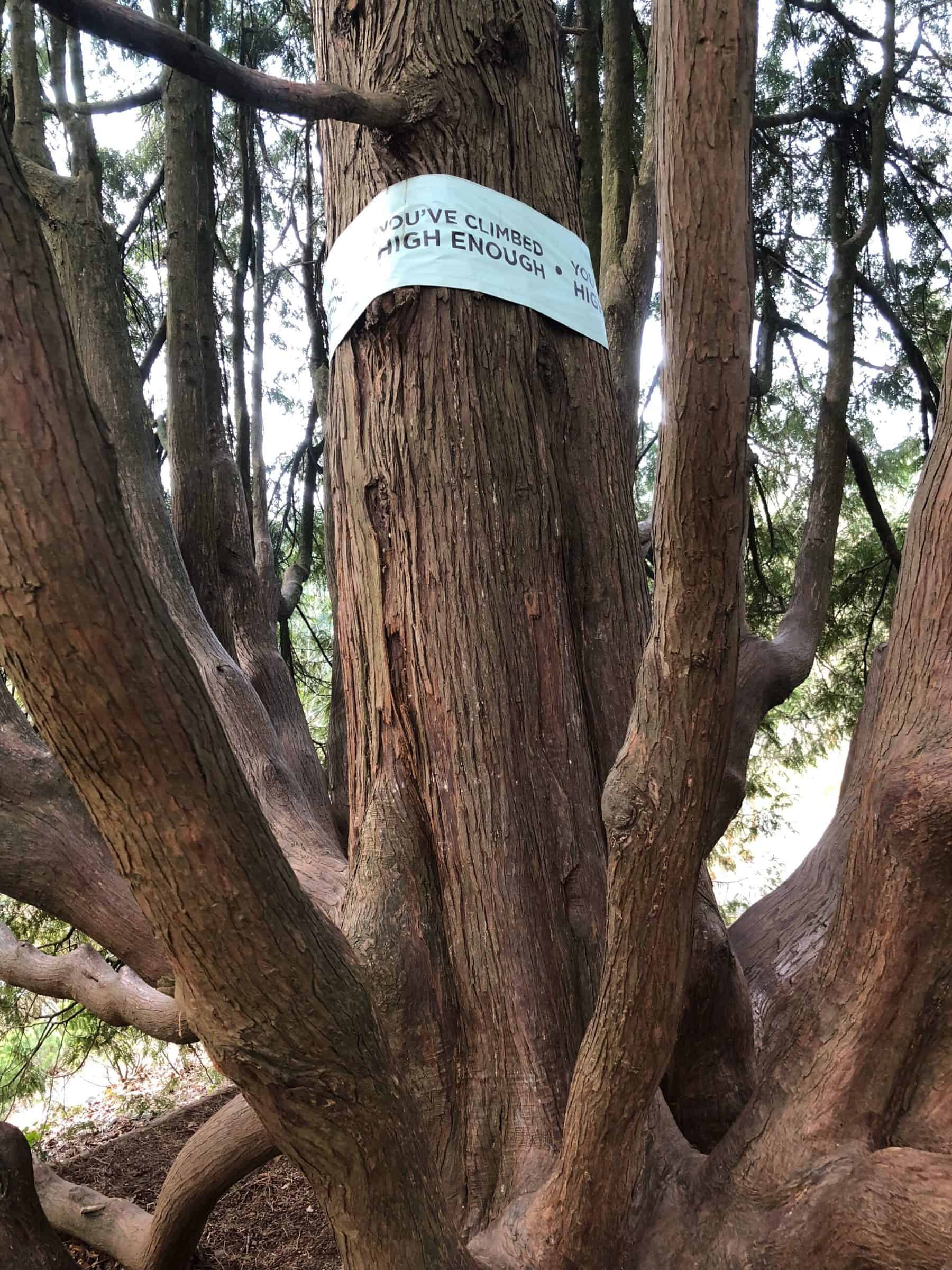- filed under: Risky Play Resources
Risky Play with Height: Life Lessons Last a Lifetime

Risky play with height includes climbing, jumping from or swinging over heights, hanging, dangling, or dropping from heights, as well as balancing over any variety of heights.
The known risk of physical injury from risky play with height is from falling. Local knowledge, and a risk benefit assessment, can reduce the hazards that may emerge while playing with heights. A reminder that risks are different than hazards in unstructured play. Hazards are known dangers that supervising adults are responsible for removing or limiting access to in outdoor play.
Risks are a personally determined engagement in thrill seeking that may look different for every child. For example, a child who wants to climb up to the roof of a shed or structure may not have the physical strength to scale the side of the structure to reach the top. Simply removing ladders and other climbing materials from the vicinity of the play area will reduce the hazard of playing on the roof if the children are young.
For older children, access to the roof may be much easier because of their size and upper body strength. Once physical ability is no longer a barrier, a risk benefit assessment must be completed to determine if the risks of climbing up to the roof outweigh the hazards.
Risky play with heights
The benefits of playing with heights include an anti-phobic effect, which means children become less fearful of heights, as they learn to safely navigate the play space.
The problem solving embedded with play with heights provides a sense of competency and accomplishment that may transfer to other learning situations that require some perseverance. In young children, simply walking along the edge of a raised curb might be a thrilling play with height. In older children, climbing trees or parkour style leaps from structures in the built environment are more common.
Play with heights is frequently found in school-yards on installed play equipment, but discouraged when children seek it out in nature. For example, a child who climbs to the top of the space net on school grounds (image above) is technically higher from the ground than a child who climbs a tree on the same school grounds (image below).
The perception of risk associated with falling from trees appears to be disproportionate to the actual data, which tells us that the built environment is significantly more hazardous when it comes to potential injuries from falling than the same type of thrill-seeking play with heights in nature. This is mostly because the built environment, like school playgrounds, are set and unchanging.
Children who have repetitively played on the same equipment year over year begin to thrill seek by using the play structures in ways they were not intended to be played on, which can lead to unanticipated injuries. Trees, on the other hand, are constantly growing and changing with the seasons, which offers thrilling opportunities for unstructured play that tends to result in kids playing more attentively.

figure 1
Common supervisory issues for play with heights
The most common misconception I see regarding risky play with height is supervising adults lifting up or helping children access play areas that they are not yet physically able to reach on their own. This is important because the problem solving that comes from having to create a solution to an access problem is one of the benefits of risky play that is eliminated when adults intervene. The sense of satisfaction, autonomy, and agency that is derived from being able to play independently is an important benefit of risky play and requires the adults to step back and let the play unfold naturally.
Lifting a child up, to access the monkey bars, for example, is inserting a child into a risky play situation that they do yet have the physical capabilities to navigate safely, and can result in injuries. The alternative, is to prompt the child to consider if there is another way they could reach the monkey bars. Small children will then observe other children access the play area and make their own plan for how to reach the monkey bars. This trial and error process plays an important role in building resiliency in children because it requires them to take risks that do not always provide immediate gratification or results.
It may take a child weeks to work out a solution to the access problem they have encountered. I have watched very small children creatively and ingeniously shimmy up support poles and use their core strength to then reach with finger tips to grasp the bars. This tells me, as a supervising adult, that these children are physically literate enough to be playing in this area and no intervention is required on my part.
Another issue in school yard supervision of unstructured play is the absolute power adults hold over how children use their own bodies.
Signs like the one shown below communicate to children that they are not competent and encourage kids to try and break rules just to show they can, rather than make their own decisions about their own personally determined comfort with risk.
An alternative to absolute rules would be to determine which trees are for climbing and which are not. Fruit trees, for example, are not good climbing trees when they are young because the weight of the child would break the limbs. This is a good opportunity to discuss why rules are made and our impact on other living things. “Not a climbing tree” might better encourage relationships with place and boundaries.
If you are interested in learning more about risky play, you may find my other posts helpful:
Read an overview of what risky play is here
Read about risky play with tools here
Read about risky play with a feeling of being lost here
If you are feeling nervous about allowing children the freedom to play with height, you may find this risk re-framing tool helpful: Outsideplay.ca
If you are on Pinterest, you may find this board helpful too:

